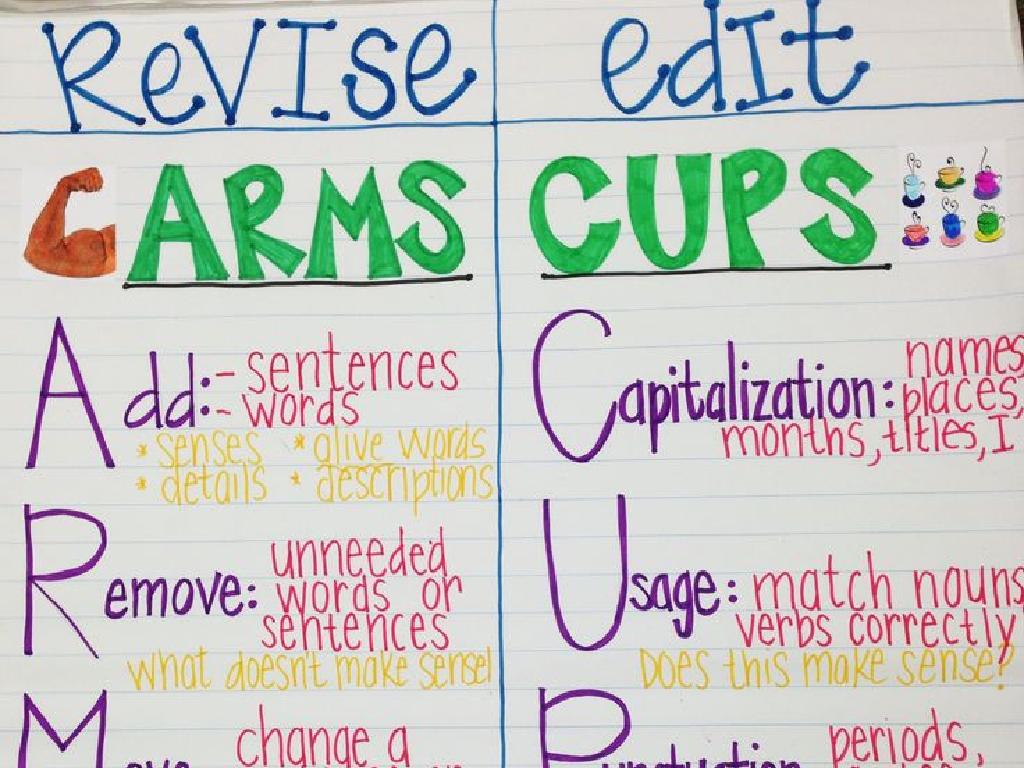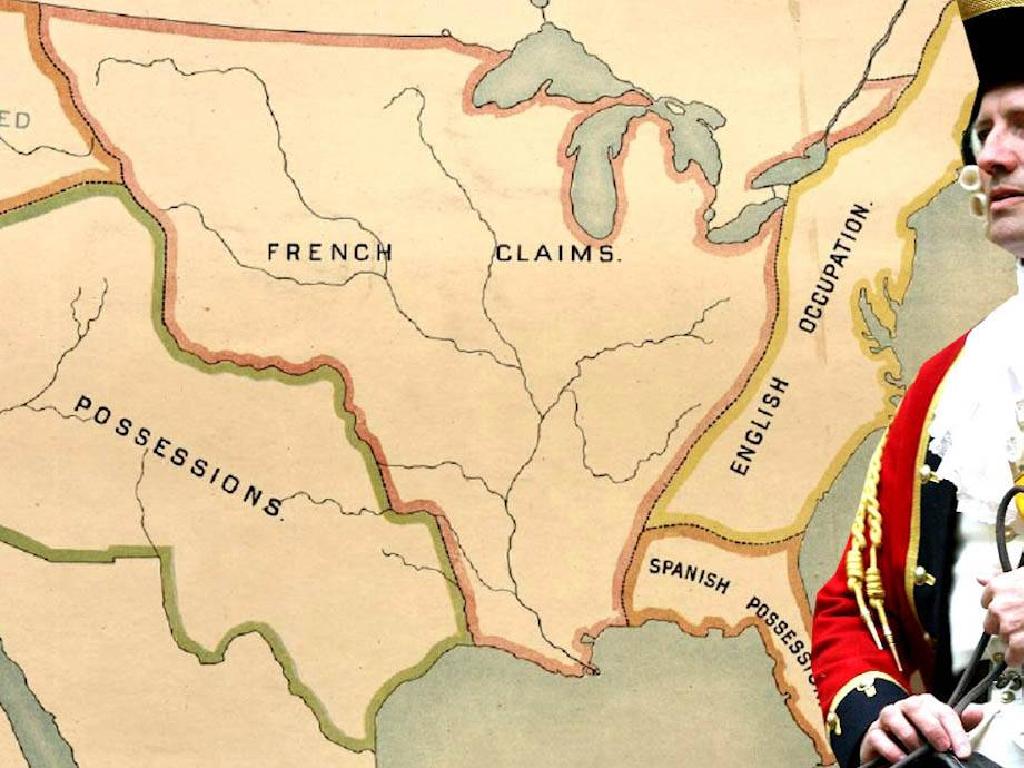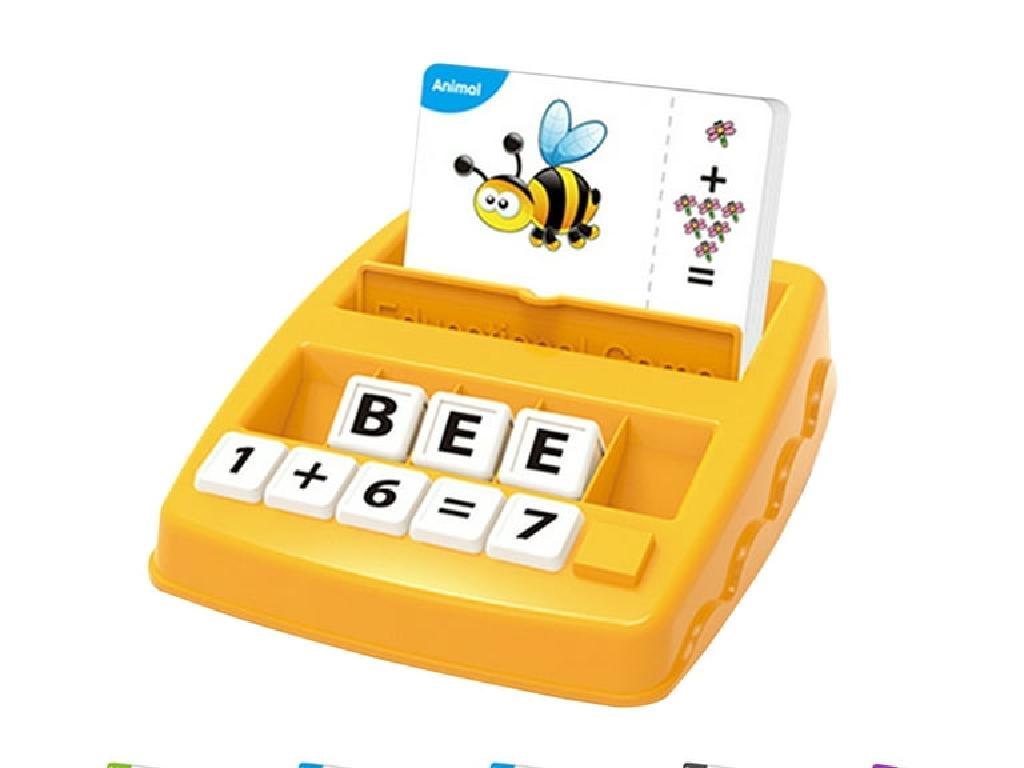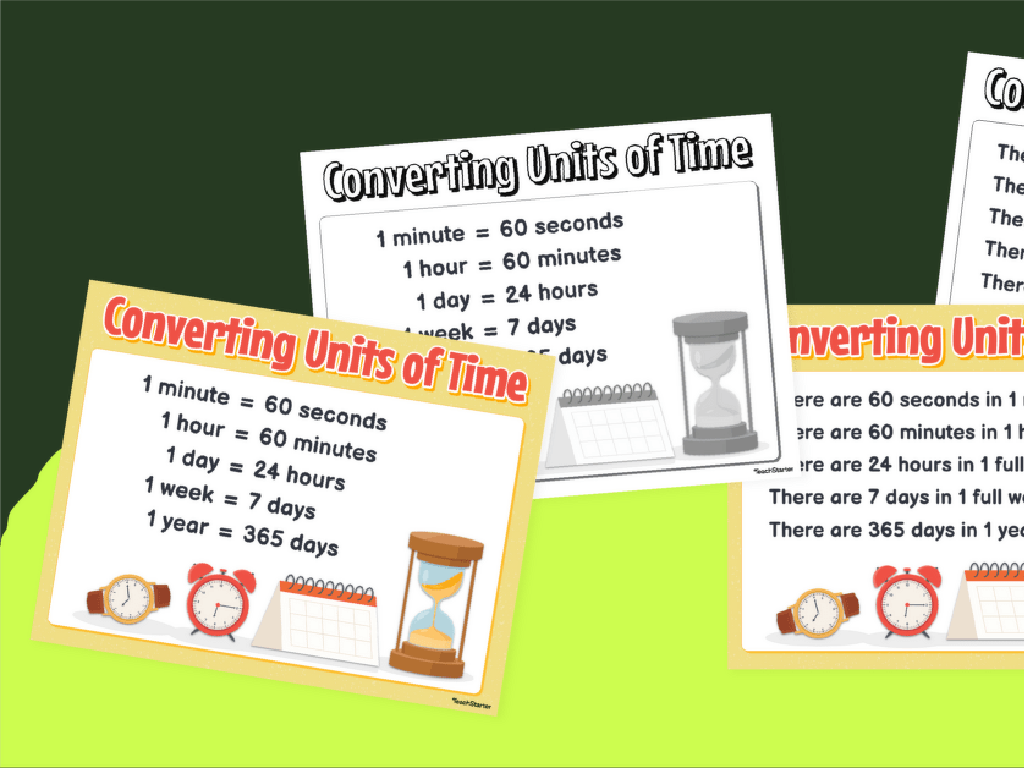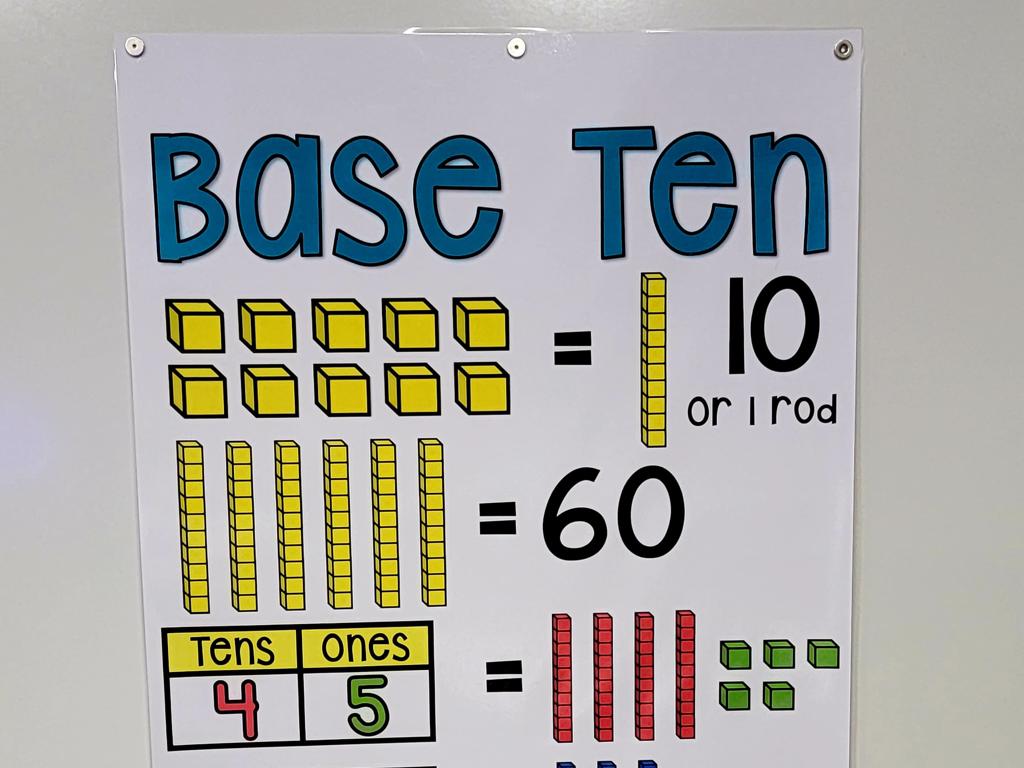Read Sight Words Set 7: Find, My, No, Red, See
Subject: Language arts
Grade: Pre-k
Topic: Sight Words
Please LOG IN to download the presentation. Access is available to registered users only.
View More Content
Welcome to Sight Words!
– Sight words are special words
– They help us read smoothly
– Today’s words: find, my, no, red, see
– Examples: ‘I find my toy’, ‘No, I see the red ball’
– Practice makes perfect
– We’ll practice reading & using these words
|
This slide introduces Pre-k students to the concept of sight words, which are commonly used words that young readers are encouraged to memorize as a whole by sight, so that they can automatically recognize these words in text without having to use any strategies to decode. Emphasize the importance of sight words in achieving reading fluency. Introduce the five new sight words for the day and use them in simple sentences to show context. Plan activities where students can practice reading and recognizing these words in various settings, such as matching games, flashcards, and writing exercises. Encourage students to look for these words at home or in class in their favorite books.
Sight Words Set 7: Learning to Read
– What are sight words?
– Words we often see and remember without sounding out
– Sight words are frequent flyers
– Words like ‘find’, ‘my’, ‘no’, ‘red’, ‘see’ appear often in texts
– Some words don’t follow rules
– Unlike ‘cat’ or ‘dog’, these words may not sound like they look
– Recognize words to read smoothly
– Knowing sight words helps us read sentences more easily
|
This slide introduces sight words to Pre-K students, emphasizing their importance in reading. Sight words are common words that appear frequently in text and are essential for reading fluency. They are often irregular and cannot be sounded out using phonics, so they must be memorized. By recognizing these words on sight, young readers can navigate texts more smoothly and with greater confidence. Use examples like ‘the’, ‘and’, ‘it’, and the words from set 7 to illustrate the concept. Encourage students to spot these words during reading time and to practice them at home.
Sight Word: ‘find’
– ‘find’ means to discover
– Like finding a toy in a playroom
– Let’s say ‘find’ together
– Can you find ‘find’ here?
– Look for ‘find’ on this slide
– Practice using ‘find’ in a sentence
– ‘I find my red ball under the bed.’
|
This slide introduces the sight word ‘find’ to Pre-K students. Start by explaining the meaning of ‘find’ as discovering something that may have been hidden or lost. Engage the class by saying the word ‘find’ aloud together to help with pronunciation. Then, challenge the students to locate the word ‘find’ on the slide, turning it into a fun game. Lastly, encourage them to use the word ‘find’ in a simple sentence, providing an example to illustrate. This activity helps students recognize and understand the sight word in both written and spoken contexts, enhancing their vocabulary and reading skills.
Sight Word: ‘my’
– ‘my’ shows ownership
– It means something is yours, like ‘my toy’
– Echo reading: say ‘my’
– We’ll all say ‘my’ together after the teacher
– Use ‘my’ with your items
– Look around, pick an object, and practice
– Get ready to share examples
|
The focus of this slide is to teach the sight word ‘my’ by associating it with ownership. Start by explaining the concept of ownership and how ‘my’ is used to express things that belong to the student. Engage the class in echo reading, where you say ‘my’ and they repeat it. Then, have each student point to an object they have and use the word ‘my’ to describe it, for example, ‘This is my backpack.’ Encourage them to think of other examples and be prepared to share with the class. This activity helps reinforce the concept of personal possession and the use of the sight word ‘my’ in a practical context.
Learning the Sight Word: ‘no’
– ‘no’ means a negative response
– Use ‘no’ to say something is not true or to disagree
– Practice saying ‘no’ together
– We’ll all say ‘no’ out loud as a class
– Thumbs down for ‘no’
– When we say ‘no’, we can also show a thumbs down gesture
|
This slide is focused on teaching the sight word ‘no’ to Pre-k students. Start by explaining that ‘no’ is a word we use when we want to say something is not right or when we don’t agree with something. Have the class practice saying ‘no’ together to reinforce pronunciation. Then, introduce the thumbs down gesture as a non-verbal way of saying ‘no’. This will help students remember the word and its meaning through physical activity. Encourage the students to use the word ‘no’ in simple sentences and understand when it is appropriate to use this word.
Sight Word Fun: ‘red’
– ‘red’ is a color word
– Repeat after me: ‘red’
– Practice saying the word together
– Find something red nearby
– Look around the room for red objects
– Share what you found!
– Show and tell about the red item
|
This slide introduces the sight word ‘red’ to Pre-k students. Start by explaining that ‘red’ is the name of a color. Engage the students by saying the word ‘red’ out loud and have them repeat it after you to practice pronunciation. Then, involve the students in an interactive activity by asking them to look around the classroom and point to objects that are red. This helps them associate the word with the actual color. Finally, encourage each student to share the red object they found with the class, reinforcing their understanding of the word and its meaning. This activity not only teaches them the sight word but also helps with color recognition and public speaking skills at an early age.
Sight Word: ‘see’
– ‘see’ means to look or observe
– When you ‘see’ something, you use your eyes.
– Let’s read the word ‘see’ aloud
– Everyone say ‘see’ with me!
– Ask, ‘What do you see around?’
– Look around the room and describe it using ‘see’.
– Practice using ‘see’ in sentences
– ‘I see a book.’ or ‘I see the teacher.’
|
The focus of this slide is the sight word ‘see’. Begin by explaining the meaning of ‘see’, which is to use your eyes to observe something. Have the class read the word ‘see’ together to practice pronunciation. Engage the students by asking them to look around the classroom and describe what they see, using the word ‘see’ in their sentences. This will help them understand the context in which ‘see’ is used and how to apply it in everyday language. Encourage them to use the word in different sentences to build their confidence in recognizing and using the sight word ‘see’.
Let’s Practice Sight Words!
– Practice with flashcards
– Flashcards help us remember words
– Say the word out loud
– Hearing your own voice helps memorization
– Get ready to start
– Have fun learning
– Learning is fun with friends
|
This slide is designed to engage Pre-k students in a fun and interactive sight word recognition activity. Using flashcards, the teacher will show the words ‘find’, ‘my’, ‘no’, ‘red’, and ‘see’ one by one. Students are encouraged to say the words out loud as they see them, which aids in memorization and pronunciation. The teacher should be prepared with a set of flashcards and ensure that each child has a chance to participate. The activity should be kept lively and encouraging, with positive reinforcement given throughout. The goal is to make learning these new sight words an enjoyable experience, setting a positive tone for future literacy development.
Find the Sight Words Game
– Let’s play a fun word search game!
– Look for these words: find, my, no, red, see
– These are our sight words for today’s lesson
– Team up with a buddy for the search
– Cooperation makes it more fun and easier
– Who can spot all the words first?
– A friendly competition to motivate learning
|
This slide introduces a classroom activity designed to reinforce the recognition of sight words through a playful word search game. Encourage the students to work in pairs to foster teamwork and social skills. The words ‘find, my, no, red, see’ should be hidden in a simple word search puzzle appropriate for Pre-K level. Provide guidance on how to look for words in the puzzle and celebrate each time a pair finds a word. This activity helps with word recognition and can also improve the children’s ability to concentrate and spot patterns. Have a few variations of the puzzle to cater to different skill levels within the class.
Class Activity: Sight Word Bingo!
– Let’s play Sight Word Bingo!
– Listen for sight words: find, my, no, red, see
– Words to listen for during the game
– Cover the word on your bingo card
– Use markers to cover words you hear
– Shout ‘Bingo!’ when all words are covered
– Be the first to cover all to win!
|
This interactive bingo game is designed to help Pre-k students recognize and read sight words set 7: find, my, no, red, see. Prepare bingo cards with these words in advance, and use a clear, enthusiastic voice to say the words out loud. Students will practice their listening skills and word recognition as they play. Monitor the class to ensure they are covering the correct words, and celebrate the winners. Encourage all students to participate and praise their efforts to foster a positive learning environment. Possible variations of the game could include using different colored markers, playing in small groups, or having students take turns calling out the words.
Great Job on Learning Sight Words!
– Amazing work learning new words!
– Practice ‘find, my, no, red, see’ at home
– Use flashcards or write them in a notebook
– Share your learning with family
– Read a book or find objects that match the words
– Excited for more sight words next time
|
Praise the students for their hard work in learning the new sight words. Encourage them to practice these words at home by using flashcards, writing them down, or finding objects that relate to the words. Engage the family by suggesting they read books together and point out the sight words. Let the students know that their learning journey will continue and that there are more sight words to look forward to in the upcoming lessons. This will help build their anticipation and excitement for learning more.

